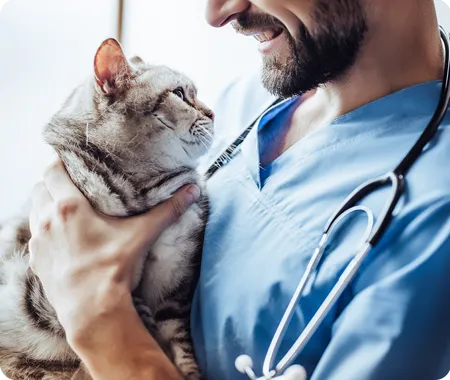When we say no limits,
we. mean. no. limits.
For real. We’re all in on helping cover your pal’s unexpected veterinary costs. Unlike others, we’ll never put a cap on when or how much we pay out.

No per-incident limits
We don’t limit payouts based on how much is claimed for a particular health condition.

No annual limits
There is no cap on how much is paid out each year.

No lifetime limits
We don’t put a cap on what is paid out over your pet’s lifetime.
Trupanion offers unlimited payouts with no sub-limits*
We are the only provider to have no payout limits, but also importantly no sub limits. Sub limits are just yet another way some insurers seek to limit your coverage whilst you could be under the impression you have adequate coverage. Common examples of sub limits with some insurers are orthopaedic conditions (cruciate), hip surgeries and tick paralysis treatments. So when you are doing your research, make sure you check out all the tricky sub limits that can exist, remembering Trupanion doesn’t have any payout or sub limits.
A Trupanion policy will never limit your cover with payout limits or sub limits on eligible claims.
*Terms, conditions, excess & exclusions apply.
*Terms, conditions and exclusions apply. Conditions that occurred prior to insurance or during the applicable waiting period may be excluded. Lifetime cover and excess is only applicable for pets that remain continually covered by Trupanion with no break in cover.

No limits
When insurance companies talk about “payout limits”, they’re referring to the maximum amount of money they are willing to pay you. These limits usually come in one of three forms:
Sub limits:
Coverage ends after a specified amount of money has been paid for a certain condition. This limit exists EVEN IF you have remaining money within the cap or total limit of the policy!
Example: A pet insurance company sets a $2,500 payout limit for treatments related to cruciate disease (knee). If your pet needs treatment, once you’ve been reimbursed $2,500 you’ll have to pay all costs related to cruciate disease. Ask your vet what they typical charge for cruciate treatments.
Annual limits:
Once you hit your annual reimbursement limit, your coverage ends for the remainder of the calendar year. The limit resets at the beginning of the year.
Example: A pet insurance policy with an annual limit of $2,000 will only pay you that amount in one year, even if your pet’s medical conditions cost thousands more.
Lifetime limits:
You are reimbursed up to a set dollar amount, and then the insurance coverage ends.
Example: A pet insurance company with a lifetime limit of $10,000 will pay up to that amount. If your pet develops a severe or chronic condition requiring additional or more expensive care, you will be responsible.
How we compare
 | Vet’s choice | Petcover Essential | Woolworth’s |
|---|---|---|---|
Unlimited payouts, for every pet. No sub limits. | Annual limits starting at $12,000 with sub limits as low as $500. | Conditions are covered for 12 months, then that condition is excluded. | Annual limits starting at $5,000. |
Veterinarians love Trupanion’s unlimited payouts
No vet wants to share difficult news concerning costs. Our unlimited coverage means they can focus on providing the best treatment available.
“Taking away the worry about finances helps clients focus on getting their loved ones quality care. It is like winning the lottery only having to pay a small portion.”
Heather Martland - Panorama Hills Animal Hospital, Calgary, AB

Frequently asked questions
Yes, your pet is covered under your Trupanion plan while you travel throughout the United States, Canada, or Puerto Rico. We also cover your pet on all US and Canadian territories and military bases around the world.
Traveling soon and not sure if your pet’s coverage will follow? Go ahead and give us a call (we’re available 24/7, 365 days a year). Please note that most travel insurance policies in general do not cover pets, so it’s always a good idea to make sure you have a good pet health insurance policy in place beforehand for your furry travel companion.
From nose to tail, we’ve got your pet is covered:
- Hereditary conditions your breed is prone to inheriting
- Unidentified issues, even if your pet doesn't have an official diagnosis
- Congenital conditions your pet developed before birth






